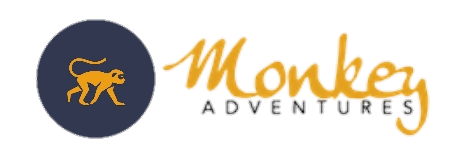Why are your prices for Mt. Kilimanjaro trek so low?
The simple answer to this is that we have much larger number of trekkers climbing with us compared to others.
Let's now delve into a detailed explanation.
There is nothing missing from the service and there are no hidden charges. While other companies plan to take 100 to 200 trekkers every year to Mt. Kilimanjaro, we plan to take 1000+ trekkers.
This order of magnitude difference let's us reduce our operating costs, which in turn allows us to pass on these savings to you.
Our goal is to be the largest budget tour operator in Tanzania. We are not looking to provide luxury service at high prices. A similar company would be RyanAir or Southwest Airlines. Honest prices coupled with absolutely great service.
Low prices does not have to mean bad service. Our TripAdvisor reviews clearly show that our service is excellent. With a well trained staff, high tech systems and well refined processes, great service can be acheived at low costs. Look at Toyota or McDonalds.
Lower Operating Costs
So, how are operating costs reduced by having a higher number of trekkers booked? A simple example is the TALA license. Tanzania Tourist Agents Licensing Authority (TALA) license is required by every tour operator working in Tanzania. The license for mountain climbing costs USD 2,000 per year. This is a fixed cost and not dependent on the number of trekkers climbing with you in a year.
Therefore, if you are have 100 trekkers climbing with a tour operator each year, cost for each trekker would be USD 20. Whereas, since we take 1,000+ trekkers every year, our cost is only USD 2 per trekker.
There are many such fixed costs, such as office space, staff, etc, which can be divided similarly, thereby reducing our operating costs.
Combining Groups
Again, by having 1,000+ trekkers climbing with us, we have the unique opportunity to combine more trekkers into groups. We are able to combine more groups than other smaller tour operators. A group is combined if their route and date match with another group. So it's evident, by having larger number of trekkers booking with us, the probability of two groups having the same date and route increases tremendously.
When we combine groups, the costs for running the tour comes down. And these costs savings are passed on to the customer. Infact, we are so confident about our ability to combine groups, all the prices we quote already take this into account.
To read more about how we calculate prices, please visit this page - Pricing based on Group Size
Does this mean you will be trekking with huge number of people? No. On the contrary, we have on average smaller groups than other tour operators.
While other tour operators have 1 or 2 dates in a month for departures, we have over 20. Other tour operators are trying to cram as many people as possible into these dates. Since we have so many departures each month, our trekkers are divided into much smaller groups. This means each group is smaller resulting in a more personalised experience.
Standard Itineraries
We only offer standard routes and itineraries. These are the most popular itineraries on Kilimanjaro. There are routes such as Northern Circuit which are absolutely phenomenal. And we do offer them sometimes on request, but for the most part, we stick to the popular routes and popular variants amongst them.
Machame route is usually done in 6 days or 7 days. There is an 8 day option which is also available, but we don't offer it. The reason again comes back to volumes. When our goal is to lower cost by combining groups, by offering non-standard itineraries, the probability of combining groups reduces, thereby bringing the overall price up.
Driven by Technology
We love technology. Everything that we do is driven by technology. Technology ensures that we are able to provide great service, each and every time.
Our whole website and backend systems are custom built by us and for us. All scheduling, bookings, payments, etc. happen automatically. This reduces the need for more staff for backend operations and also reduces the possibility of errors.
And every day we are looking at newer technologies to help deliver lower costs to you.
Finally...
Every day we are looking for ways to reduce costs while improving our service quality and customer experience. Many companies in various industries have done this before. Toyota has done it. Ryan Air and Southwest have done it. McDonalds has done it. ALDI has done it. IKEA has done it. And we will follow in their footsteps, and apply the same fundamental principles to our business as well.
